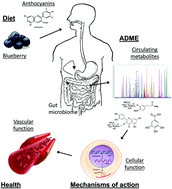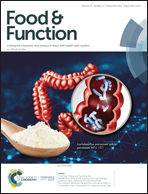Blueberries and cardiovascular disease prevention
Abstract
Blueberries are a rich source of (poly)phenols, particularly anthocyanins. Epidemiological studies indicate that anthocyanin-rich foods including blueberries are associated with a reduction in the risk of cardiovascular disease. These observational findings are supported by a number of randomized-controlled trials showing improvements in biomarkers of cardiovascular disease risk. The beneficial effects of blueberry (poly)phenols are particularly clear when measuring flow-mediated dilation over various timeframes and study populations. However, other outcomes are less clear, such as effects on blood pressure, arterial stiffness and blood lipid profile. This may be due to the heterogeneity existing in study designs, such as duration of the intervention, and the health status of participants. Longer-term RCTs using gold standard methods in relevant populations which can be translated to the general public are needed to clarify and strengthen the evidence available. While circulating phenolic blueberry metabolites have been linked with improvements in vascular function, the biological activities and mechanisms of action of individual metabolites and their interaction in vivo are still unknown. Evaluating the bioactivities of metabolites alone and together, and analysing their structure–activity relationship in well-designed and physiologically relevant experimental and human studies are needed to understand the mechanisms of how these metabolites affect vascular function.

- This article is part of the themed collection: Berry Health Benefits Symposium


 Please wait while we load your content...
Please wait while we load your content...